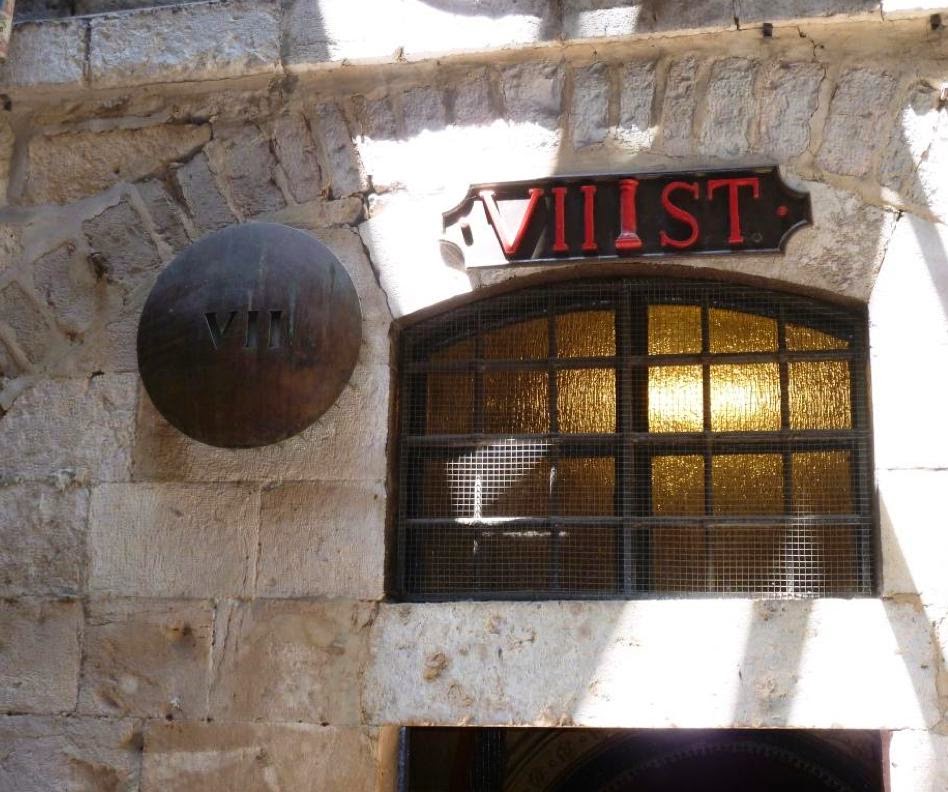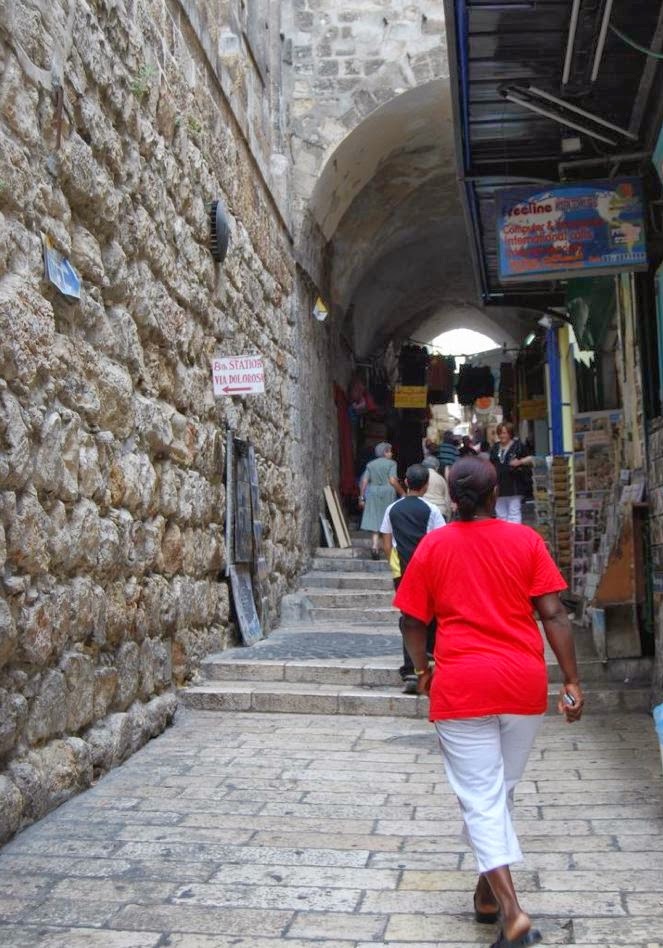Jerusalem - Walking the Via Dolorosa
There are many traditions concerning the route Jesus followed on the way to His crucifixion. The tradition most followed seems to be from “The Dolores Visions of the Passion of Christ” by Anne Catherine Emmerich. Mel Gibson’s “The Passion of Christ” followed it to the letter.
Her vision had 14 stations:
1 Jesus condemned to death
2 Jesus received the cross
3 Jesus fell for the first time
4 Jesus met His sorrowful Mother
5 Simon of Cyrene helped carry the cross
6 Veronica wiped Jesus’ face
7 Jesus fell a second time
8 Jesus spoke to the women
9 Jesus fell a third time
10 Jesus stripped of His garments
11 Jesus nailed to the cross
12 Jesus died on the cross
13 Jesus taken from the cross and wrapped for burial
14 Jesus laid in the tomb
The biblical account is as follows:
Jesus celebrated Passover with His disciples
Jesus in the garden
Jesus betrayed by Judas, then arrested
Jesus condemned by the Sanhedrin
Jesus denied [by Peter]
Jesus judged by Pilate [sent to Herod Antipas, then returned to Pilate]
Jesus scourged
Jesus took His cross
Jesus helped by Simon
Jesus crucified
Jesus [temporarily] prepared for burial
Jesus placed in the tomb
Let’s follow the 14 station path:
Station I: Walking through the Lyon’s Gate, the first station is a few yards inside at the present day Umariya Elementary School. This would have been the area of the Antonia Fortress or Praetorian. While each station is marked with a medallion indicating the station in Roman numerals, you have to pay close attention, because they are easy to miss.
Station II: Continue on the Via Dolorosa until you reach the Ecce Homo Convent. It was here that Pontius Pilate gave his famous “Behold the Man” [Ecce Homo in Latin] speech, Christ was bound, received a crown of thorns and His cross.
Station III: Continue on the Via Dolorosa and just before you turn left at the next intersection, the third marker is located next to the Polish Catholic Chapel. It marks the first fall of Christ.
Station IV: After you turn left, the fourth station will be on your left hand side. This is where Jesus met His Mother, Mary. Today, it is home to an Armenian Orthodox oratory.
Station V: The fifth station is on the corner of the next street as you continue your walk down the Via Dolorosa. This is where Simon the Cyrene carried the cross for Jesus.
Station VI: The street begins to ascend at this point. Here, according to tradition, Veronica wiped the face of Jesus, which created the “Veil of Veronica.” This veil supposedly was imprinted with the image of Christ after she had wiped His face.
Station VII: As you continue up the street you reach another turn. Just before turning left, you’ll see the seventh station where Christ fell a second time. This marker is usually red in color and the ornamentation on the doors underneath it are also highlighted in red.
Station VIII: After turning left at Souq Khan al-Zeit, cross the market street and keep ascending the steps. The next marker is opposite the Souvenir Bazaar. This often overlooked station is where Jesus stopped to speak to some pious Jewish women. It is adjacent to the Greek Orthodox Monastery.
Station IX: This is where Jesus fell for the third time according to tradition. This station can also be a little confusing because it marks your departure from the Via Dolorosa and entrance to the Church of the Holy Sepulcher, where the remaining stations of the cross are found.
Station X: This photo shows the exterior of the Chapel of the Franks at the Church of the Holy Sepulcher. The tenth marker is inside the chapel. This is where Jesus was stripped of His garments.
Station XI & XII: The eleventh and twelfth stations are a singular place - Golgotha - where the cross was erected and Jesus was crucified.
Station XIII: When Jesus’ body was removed from the cross, it was temporarily prepared for burial. The thirteenth marker is the place where His body was laid. It is called the Stone of Unction or Stone of Preparation.
Station XIV: The fourteenth station is the tomb where Jesus’ body was laid to rest. Here you see the altar that was built over the tomb.














Comments
Post a Comment